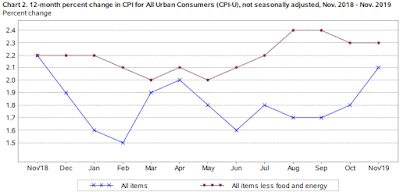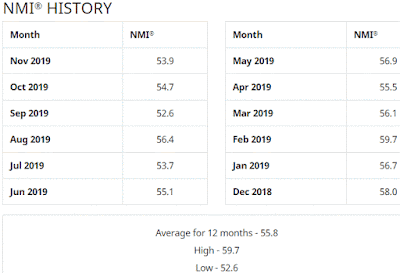Consumer Confidence Index (CCI) for December 2019
================
Predicted: 128.0
- Actual: 126.5
================
Previous Month (revised): 126.8
- Change from Previous Month: -0.237% (-0.3 point)
The "predicted" figure is what economists were expecting, while the "actual" is the true or real figure.
From Today's Report:
"...'Consumer confidence declined marginally in December, following a slight improvement in November,' said Lynn Franco, Director of Economic Indicators at The Conference Board. 'While consumers’ assessment of current conditions improved, their expectations declined, driven primarily by a softening in their short-term outlook regarding jobs and financial prospects. While the economy hasn’t shown signs of further weakening, there is little to suggest that growth, and in particular consumer spending, will gain momentum in early 2020.'..."
Every month, The Conference Board sends a questionnaire to 5,000 U.S. households. Survey participants are polled about their feelings regarding the U.S. economy, current and future, and about their own fiscal circumstances. On average, 3,500 participants complete and return the 5-question survey.
- The baseline "100" score for the CCI is associated with 1985 survey data.
When consumers feel good about the economy, they tend to do more spending, and vice versa.
Based in New York City, The Conference Board is a private, not-for-profit organization with a mission to, "create and disseminate knowledge about management and the marketplace to help businesses strengthen their performance and better serve society."
The CCI is usually released on the last Tuesday of the month.
================
Labels: cci, consumer_confidence, consumers, soft_data
|
--> www.FedPrimeRate.com Privacy Policy <--
CLICK HERE to JUMP to the TOP of THIS PAGE > SITEMAP < |














